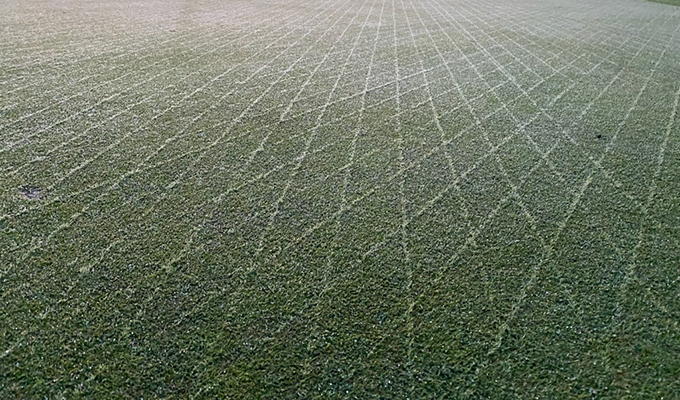Golf course superintendents are always looking for ways to improve bentgrass performance without disrupting play. While traditional spring and summer seeding windows get most of the attention, dormant seeding remains an underused—but highly effective—option when conditions are right. When executed correctly, it can accelerate spring establishment and give bentgrass a stronger start heading into the growing season.
What Is Dormant Seeding?
Dormant seeding is the practice of applying bentgrass seed when soil temperatures are too low for germination—typically in late fall or early winter. Seed lies inactive through the cold months, then germinates naturally as soil temperatures rise in spring. This approach relies on nature’s timing to deliver early-season establishment.

Why Consider Dormant Seeding?
- Jump-Start Spring Establishment
Because the seed is already in place, germination begins at the earliest suitable moment. Many superintendents see stronger early-spring coverage than waiting for late-spring seeding windows. - Takes Advantage of Natural Moisture
Winter precipitation and early spring moisture help move seed into the soil profile. Snowmelt and consistent spring rains often provide far more dependable moisture than mid-summer irrigation. - Efficient Use of Labor and Equipment
Winter often brings a lighter workload and fewer on-course distractions. Dormant seeding allows teams to get ahead of spring demands and make use of available labor during the off-season. - Enhanced Seed-to-Soil Contact
Freeze–thaw cycles naturally pull seed into the soil, creating micro-fractures that improve contact and help young seedlings anchor more effectively once growth begins.
Risks to Consider
Dormant seeding can be a valuable tool, but it’s not without limitations:
- Weather Swings: Unseasonably warm stretches may trigger premature germination, leaving seedlings vulnerable when temperatures drop again.
- Runoff and Erosion: Seed applied to sloped or high-runoff areas may shift or wash away.
- Seed Predation: Birds, rodents, and other wildlife may consume seed if left exposed.

Best Practices for Dormant Bentgrass Seeding
- Aim for late fall or early winter when soil temperatures are consistently below 50°F (10°C).
- Choose Tee-2-Green blue-tag certified bentgrass to ensure genetic purity, performance, and uniformity.
- Prioritize thin, stressed, or shaded areas that will benefit most from early establishment.
- Use a light sand topdressing or a quick roll to protect seed and boost seed-to-soil contact.

Final Thoughts
Dormant seeding isn’t a cure-all, but it is an essential strategy for superintendents working to stay ahead of spring growth and strengthen bentgrass stands. When timing, labor, and winter conditions align, dormant bentgrass seeding can deliver a meaningful advantage—helping set the stage for healthier, denser turf as the season begins.
If you’d like guidance specific to your course conditions, Tee-2-Green and our distributors are always here to help.





